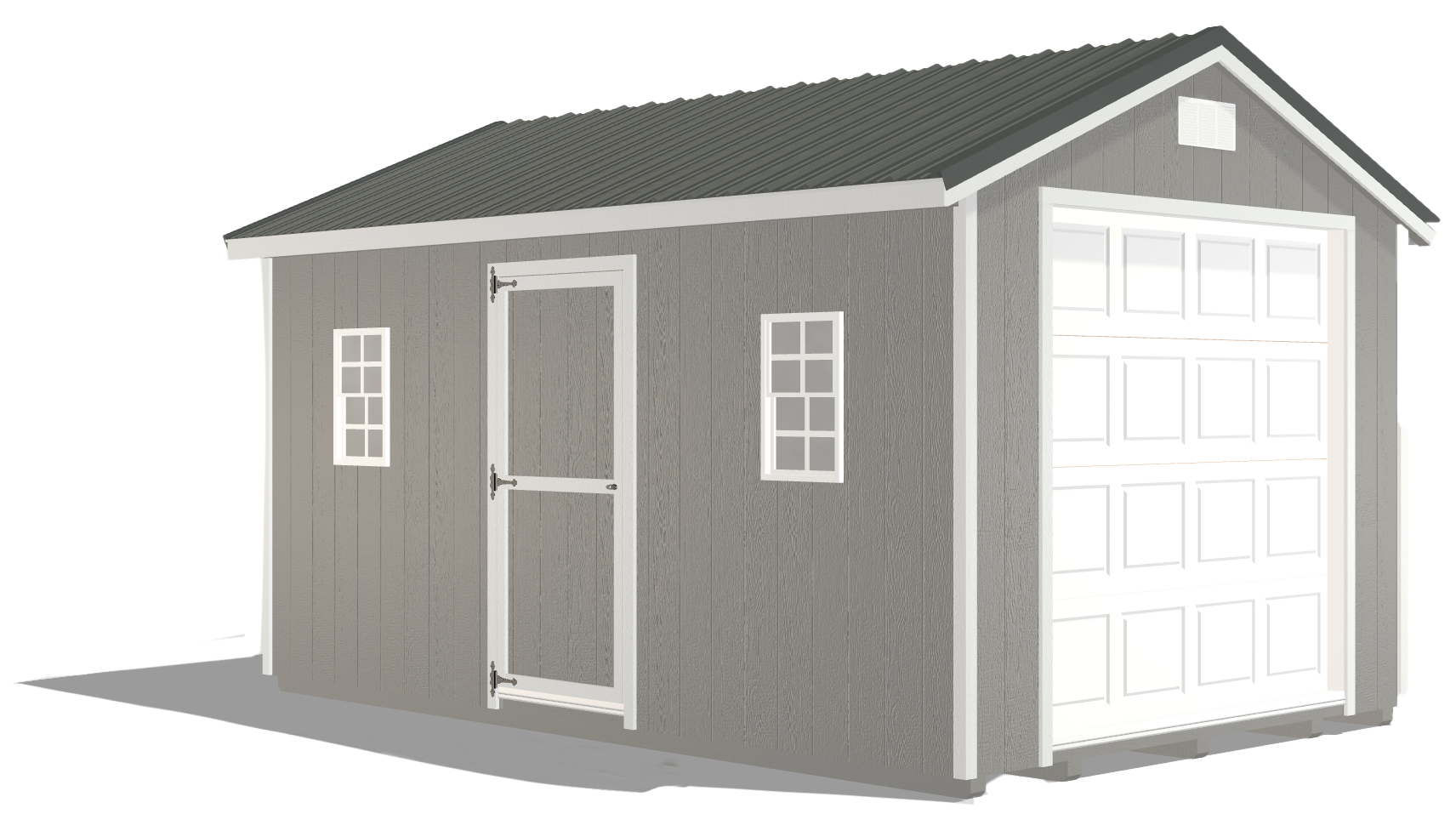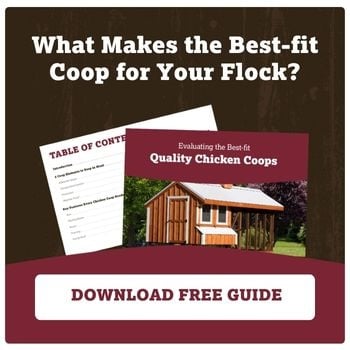Compact and Cozy: Creating the Perfect Small Chicken Coop
by Dakota Storage Buildings, on October 04, 2023
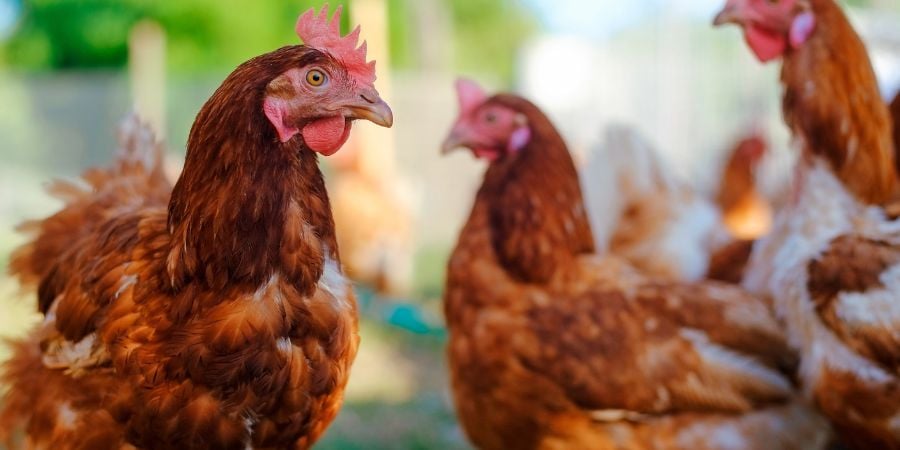
Raising chickens has grown increasingly popular among homeowners, and with this interest comes the need to provide your flock with a safe and comfortable coop. For many, the idea of building or purchasing a backyard chicken coop can be daunting, primarily if they have only a small flock to consider. The dilemma? They are searching for something that is not too large to consume their entire backyard yet spacious enough to give their chickens the freedom to strut, cluck, and roost. A small chicken coop can be the perfect blend of practicality and aesthetics. The emphasis should be on ensuring that each chicken has adequate space to move about, eat, lay eggs, and rest, all while ensuring they are shielded from the elements and potential predators. We want to help you find that sweet spot between compact design and utmost comfort, ensuring your chickens lead a happy, healthy life.
Key Factors for Thriving Backyard Chickens
Understanding and addressing the needs of your flock is essential. Chickens, like any other pets, have their unique requirements that, when met, can optimize their health, happiness, and productivity.
Ventilation: Fresh air is the lifeblood of any living space. Germs and mold can build up inside the coop without proper ventilation, creating an unhealthy bird environment. Ensuring adequate airflow maintains the right temperature but also aids in minimizing health risks, such as respiratory diseases. Small chicken coops should ideally have vents placed high, usually near the roof, so that hot, moist air can easily escape.
Run Size: The recommendation of 8 square feet per bird in an enclosed backyard chicken coop run helps ensure your flock has space to walk around and indulge in their natural behaviors. Chickens love scratching the ground, peaking at things, taking dust baths, and even chasing after insects. A spacious roaming area ensures they can do all this and more without feeling cramped or stressed.
Roofing Protection: Beyond the obvious protection from rain, a roof provides many benefits. A partial or full roof offers much-needed shade and helps protect from the sun on scorching summer days. Airborne predators, like hawks, can pose a significant threat to backyard flocks. A sturdy roof acts as a deterrent, ensuring your flock can peck in peace.
Perch and Roosting Areas: Chickens have an inherent instinct to perch. At night, they seek elevated areas to roost inside the small chicken coop, which gives them a sense of safety from ground-dwelling predators. Incorporating natural elements like branches and stumps in the run caters to this instinct and enriches their environment. Roosts also help to keep the chickens off the ground during the colder months, ensuring they remain warm and dry.
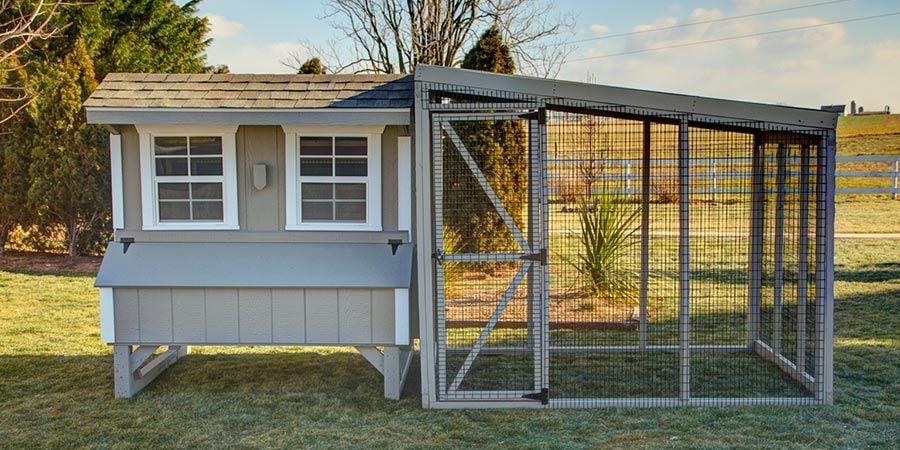
Guarding Your Flock: Ensuring Small Chicken Coop Safety
When considering a home for your flock, safety should always be at the forefront. Chickens, naturally prey animals, are vulnerable to various threats from the environment and potential predators. Striking a balance between a well-ventilated backyard chicken coop and a secure one can be delicate. Airborne predators such as owls and hawks are not the only threats. Raccoons, foxes, and even neighborhood cats and dogs can pose significant risks to your flock. These animals are often crafty, and capable of opening simple latches. Investing in a coop with latching lids and secure, predator-proof locks is critical.
While ventilation is essential, it is vital to ensure that vents, windows, and any openings are constructed in a manner that does not invite unwanted guests. Hardware cloth is often a preferred choice over standard chicken wire. Its fine mesh prevents smaller predators like weasels from sneaking in and offers an added layer of security against bigger threats. Additionally, positioning vents higher up and secure latching mechanisms on windows, and doors can deter most predators. Some predators, such as foxes, can dig. Therefore, if your coop is situated on the ground, consider embedding a layer of hardware cloth or a skirt of buried wire extending outwards around the perimeter of your coop. This barrier will deter diggers from burrowing underneath and gaining access to your chickens.
Predators are not the sole concern. Adverse weather conditions can be just as detrimental. Ensure your coop has proper insulation for colder months to keep your chickens warm. During hotter periods, ample shade and ventilation can prevent overheating. The coop should be capable of keeping out rain, snow, and drafts, which can pose significant health risks to chickens. Regularly inspect your coop for any signs of wear and tear or potential breaches. This includes checking the integrity of the wire mesh, the sturdiness of latches, and ensuring there is no rot or damage to the structure. Promptly addressing these concerns can make all the difference in keeping your flock secure.
Factors to Consider When Buying a Small Chicken Coop
Acquiring the perfect small chicken coop for your backyard is not merely a task of measuring dimensions and placing an order. It involves a thoughtful process of integrating various factors to ensure your backyard chicken coop is not just a shelter but a home for your flock. Here are some pivotal considerations.
Space Requirements
Space is about accommodating your chickens and ensuring their overall well-being. There should be 10 square feet of space for each bird, enough room to provide a comfortable nesting area, a perch to roost on, and ample ground to express their natural behaviors. The space also affects their productivity. Chickens with room to move, stretch, and play tend to be happier and, consequently, lay better eggs.
Placement
The small chicken coop should ideally be positioned where it receives both sunlight and shade. Sunlight acts as a natural disinfectant, keeping the coop dry and free from pests. However, during warmer days, shade becomes equally crucial to prevent overheating. If natural shade from trees is not available, consider additional structures or sunshade screens to block excessive sunlight. Another point to note is the ground elevation. Placing your coop on higher ground can prevent water logging during rainy seasons.
Materials
The materials used profoundly influence your coop's longevity, safety, and comfort. Opt for high-quality materials to ensure a sturdy base resistant to decay and warping. The roofing should be durable, providing protection from the elements and adequate insulation. The walls, nesting boxes, and interiors should use quality wood that has been sealed to prevent moisture infiltration. Remember, investing in premium materials ensures the coop's durability and significantly enhances the comfort of your chickens.
Flooring and Layout
The backyard chicken coop’s floor is more than just a surface; it is the foundation upon which your flock will spend most of their time. LP ProStruct Flooring with SmartFinish and Epoxy Finish is a fantastic choice, providing a durable yet attractive overlay resistant to decay, warping, and pests. The layout should be designed with the birds in mind.
Free-range vs. Enclosed Coops, Which Is Right for You?
When choosing a chicken coop, there are several styles and types, each with its own set of advantages. When deciding on the perfect coop for your flock, understanding the different coop types can provide clarity and direct your decision.
Free-range:
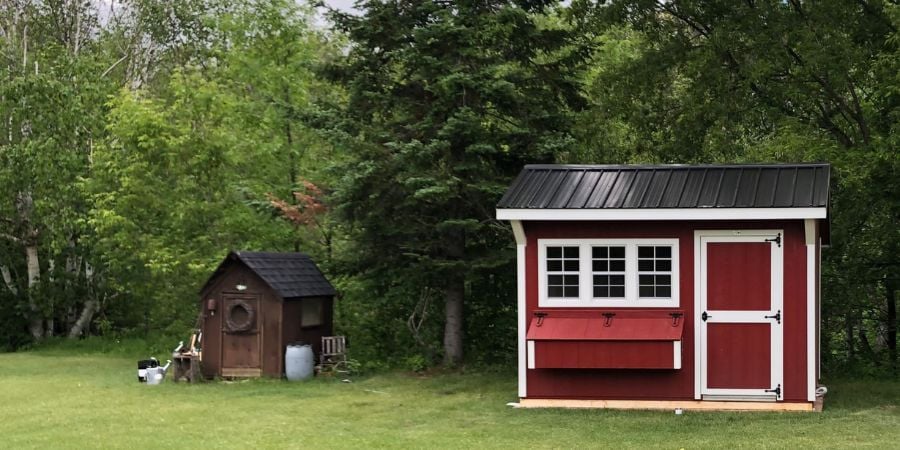
Free-range coops do not have an attached run, allowing your flock to roam in your backyard without restrictions. Free-range chickens are given the freedom to wander and explore vast expanses of your yard or land. With this style of backyard chicken coop, flocks enjoy a lifestyle that is closer to their natural instincts. They can forage for insects, scratch around, and take in the sunshine. With more space to move and a varied diet, free-range chickens often exhibit better health and produce eggs with a richer taste. The primary challenge that comes with free-rage coops is safeguarding your flock from predators since they have more exposure.
Enclosed:
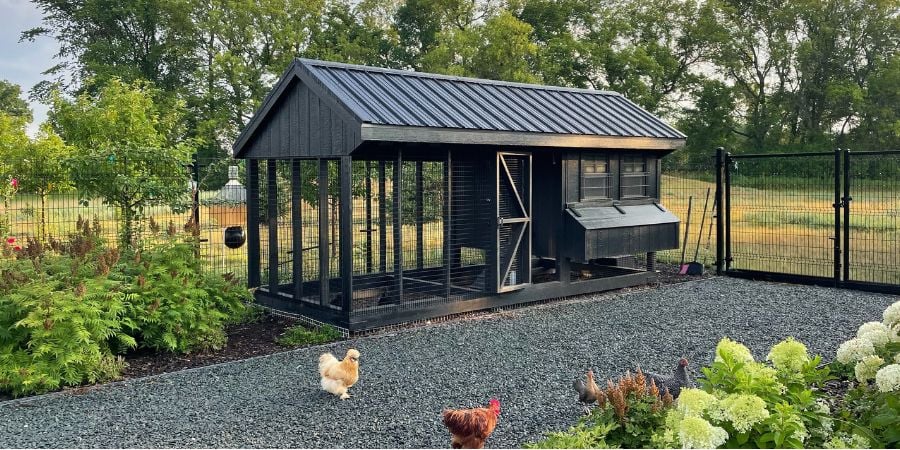
An enclosed chicken coop is a more defined structure where a run is attached to the coop, limiting your flock’s exposure to external elements and potential threats. Being in a contained environment significantly reduces the risk of predators. Plus, enclosed coops make it easier to manage and control conditions like cleanliness, feed, and water. These coops are often more suited for urban or suburban settings with space constraints. However, with enclosed coops, chickens have restricted movement and fewer opportunities for natural foraging. Since the space is limited, regular cleaning becomes crucial to prevent diseases.
Choose the Right Coop for a Happy, Healthy Flock
Ensuring your chickens have the right environment is pivotal to their overall well-being, productivity, and happiness. It is essential to remember that the coop you choose is more than a purchase; it is an investment. An investment in the happiness of your chickens, the quality of the eggs they produce, and the countless joyful moments you will experience along the way. If you want to learn more about finding the best-fit coop, we have curated an exhaustive guide detailing the different chicken coops tailored for various needs and flock sizes. Our guide will cover the different things every chicken needs to be healthy and happy, the key features every coop should include, and what coop options are available. Streamline your backyard chicken coop decision-making process by downloading our free guide today.


















